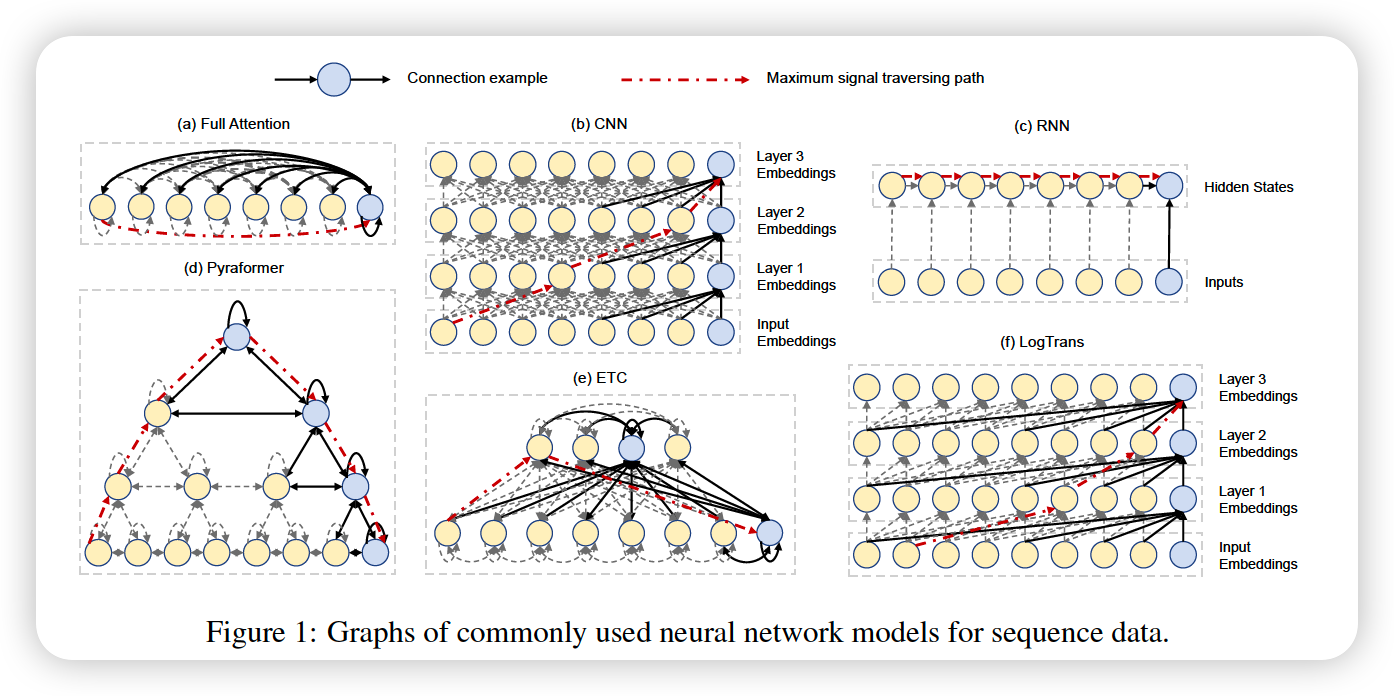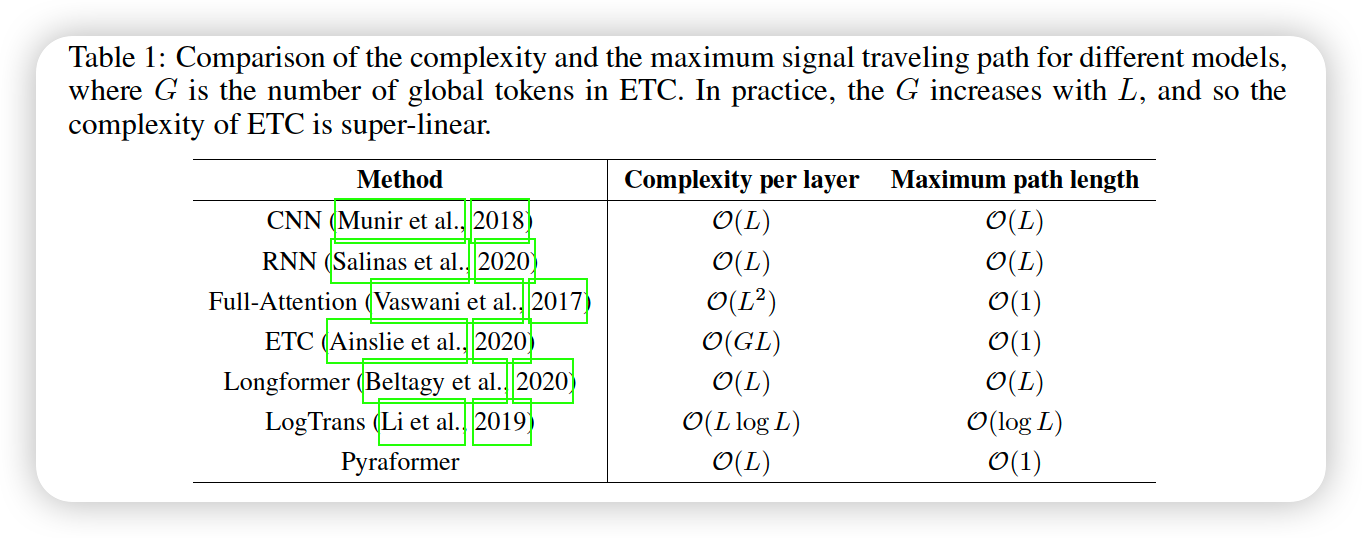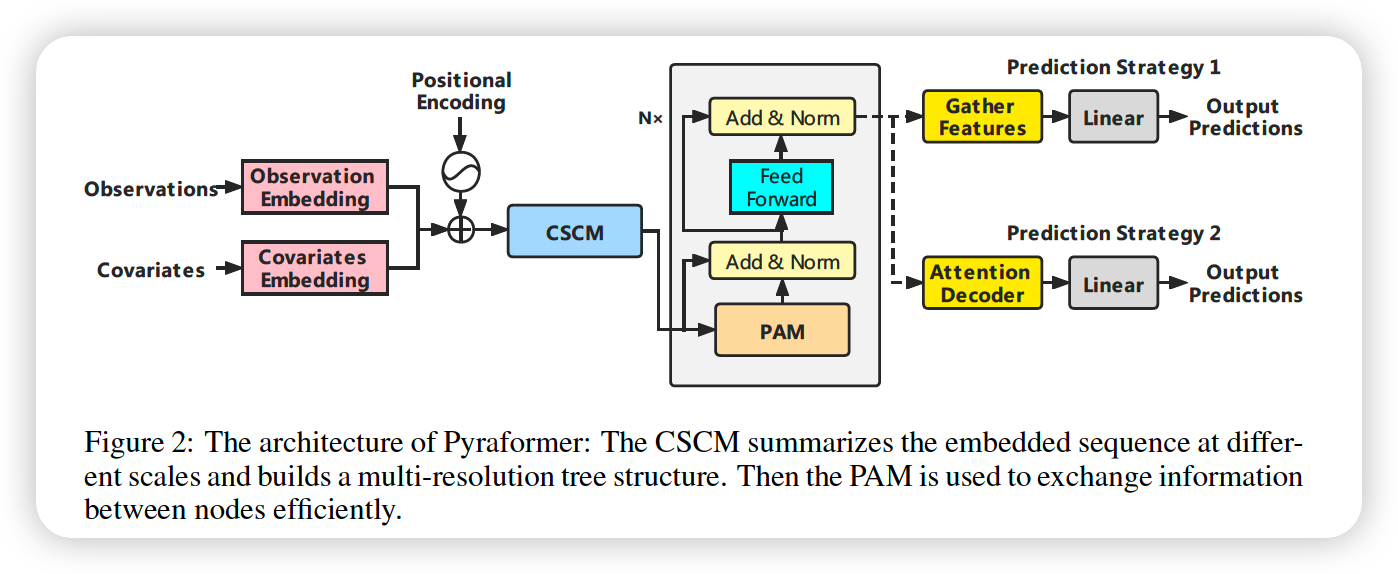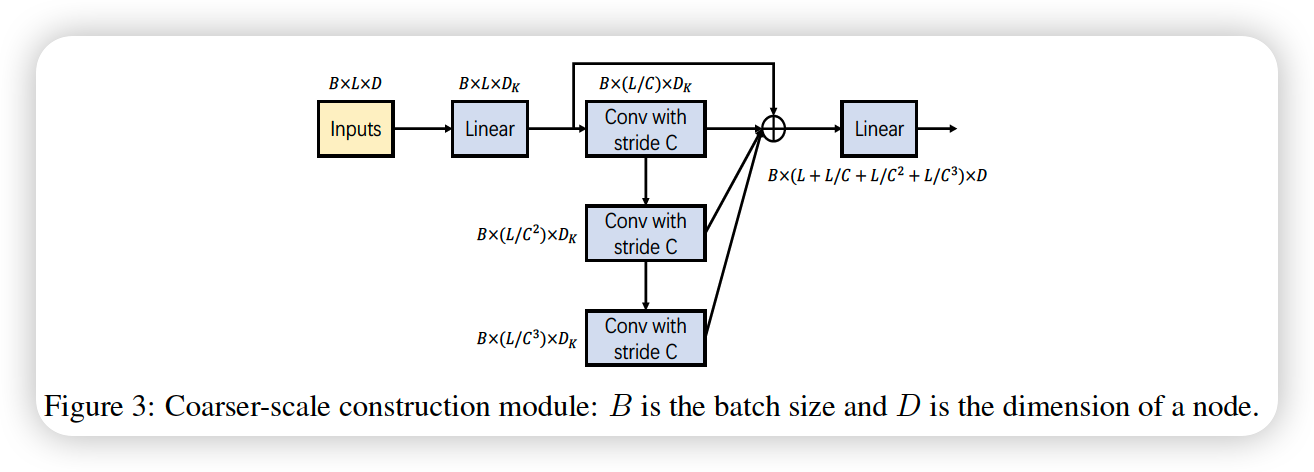Pyraformer : Low-Complexity Pyramidal Attention for Long-Rang TS modeling and forecasting (2022)
Contents
- Abstract
- Introduction
- Hierarchical Transformers
- Method
- PAM ( Pyramidal Attention Module )
- CSCM ( Coarser-Scale Construction Module )
- Prediction Module
0. Abstract
Pyraformer
- explore the MULTI-resolution representation of TS
- introduce PAM (pyramidal attention module)
- Inter-scale tree structure : sumamrise features at different resolution
- Intra-scale neighboring connections : model the temporal dependencies of different ranges
- complexity : \(O(1)\)
1. Introduction
RNN & CNN
- low time complexity : linear in temrs of TS length \(L\)
- maximum length of signal traversing path : \(O(L)\)
\(\rightarrow\) difficult to learn dependencies between distant positions
Transformer
- shortens the maximum path : \(O(1)\)
- high time complexity : \(O(L^2)\)
\(\rightarrow\) difficult in very long TS
Compromise between two :
- LongFormer (2020)
- Reformer (2019)
- Informer (2021)
\(\rightarrow\) but, few of them achive a maximum path length less that \(O(L)\)
Pyraformer
( Pyramidal Attention based Transformer )
(1) Inter scale
- multi-resolution representation
(2) Intra scale
-
captures the temporal dependencies at each resolution,
by connecting neighboring nodes together


Summary
- maximum path length : \(O(1)\)
- time & space complexity : \(O(L)\)
2. Hierarchical Transformers
HIBERT (2018)
-
uses a Sent Encoder to extract features of a sentences
-
forms the EOS tokens of sentences in the document, as a new sequence
& input into Doc Encoder
-
limited to NLP
Multi-scale Transformer (2020)
- using both top-down & bottom-up network
-
help reduce time & memory cost of original Transformer
- still sfufers from quadratic complexity
BP-Transformer (2019)
-
recusrively partitions the entire input sentence into 2 ,
until a partition only contains a single token
BP-Transformer vs Pyraformer
- BP-Transformer
- initializes the nodes at coarser scale with 0
- Higher complexity : \(O(L\log L)\)
- Pyraformer
- introduces the coarser-scale nodes using a construction module
3. Method

Notation
- predict future \(M\) steps : \(z_{t+1: t+M}\)
- given ..
- (1) previous \(L\) steps : \(\boldsymbol{z}_{t-L+1: t}\)
- (2) covariates : \(\boldsymbol{x}_{t-L+1: t+M}\)
Process
- step 1) embed three things & add them
- (1) data
- (2) covariate
- (3) position
- step 2) construct a multi-resolution \(C\)-ary tree
- Using CSCM ( Coarser-Scale Construction Module )
- step 3) use PAM, by passing messages using attention in pyramidal graph
- step 4) different network structures to output final predictions
3-1. PAM ( Pyramidal Attention Module )
- Inter-scale & intra scale
- easier to capture long-range dependencies
- multi resolution
- finest scale : ex) hourly
- coarser scale : ex) daily, weekly
- opposed to full-attention, pyramidal-attention only pays attention to a linited set of keys
3-2. CSCM ( Coarser-Scale Construction Module )

to facilitate the subsequent PAM to exchange information between nodes
- several convolution layers with kernel size \(C\) & stride \(C\)
Concatenate these fine-to-coarse sequence before inputting them to PAM
3-3. Prediction Module
a) single-step forecasting
-
add an end token ( \(z_{t+1}=0\) )
-
after the sequence is encoded by PAM,
gather the features given by last nodes at all scales in pyramidal graph
concatenate them!
-
pass them to FC layer
b) multi-step forecasting
b-1)
- same as a)
- just map last nodes (at all scales) to \(M\) future time steps
b-2)
-
resort to the decoder with 2 full attention layers
-
replace the observations at the future \(M\) time steps with 0,
embed them,
take 2 attention layers ( refer to the Figure )
